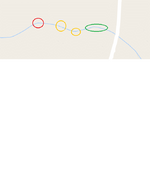Hey guys. Wanted to get your opinion on this creek I have been look my around in.
It seems that everywhere I look there is gold, not a lot by any means but 5 or so very small flakes in a full 14" test pan. The creek is about 10' wide so it's really small and not deep at all. Bedrock exposed in a lot of places.
The problem/question I have is, it seems that if I pan the top foot I find gold but if I pan down deeper I don't get anything? Has anyone ever experienced this? Does that mean that the gold is freshly peaches down the creek?
Should I keep going up the creek or down creek?
Just wondering what your thoughts were on this.
It seems that everywhere I look there is gold, not a lot by any means but 5 or so very small flakes in a full 14" test pan. The creek is about 10' wide so it's really small and not deep at all. Bedrock exposed in a lot of places.
The problem/question I have is, it seems that if I pan the top foot I find gold but if I pan down deeper I don't get anything? Has anyone ever experienced this? Does that mean that the gold is freshly peaches down the creek?
Should I keep going up the creek or down creek?
Just wondering what your thoughts were on this.
Amazon Forum Fav 👍
Upvote
0






